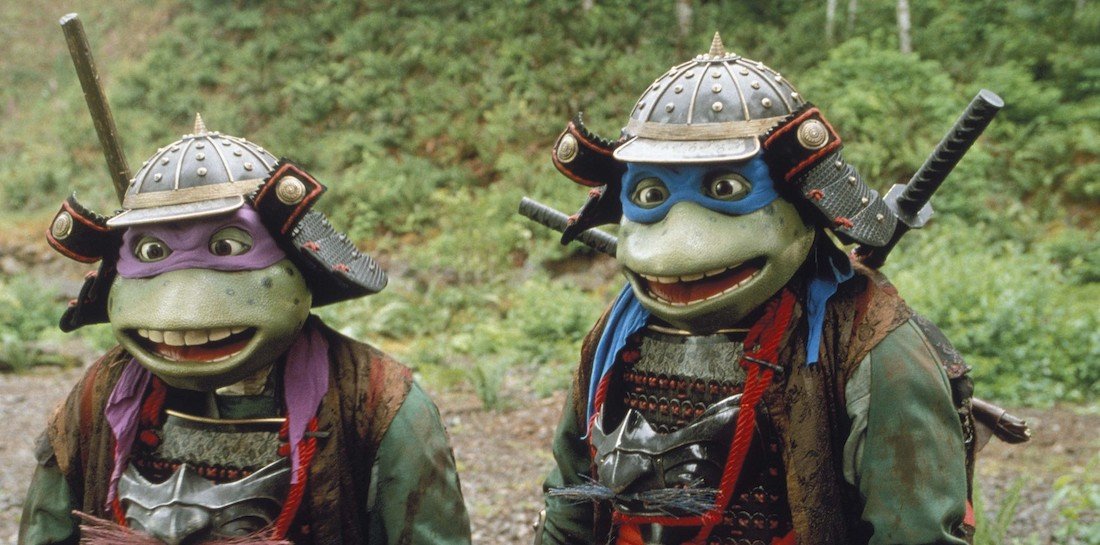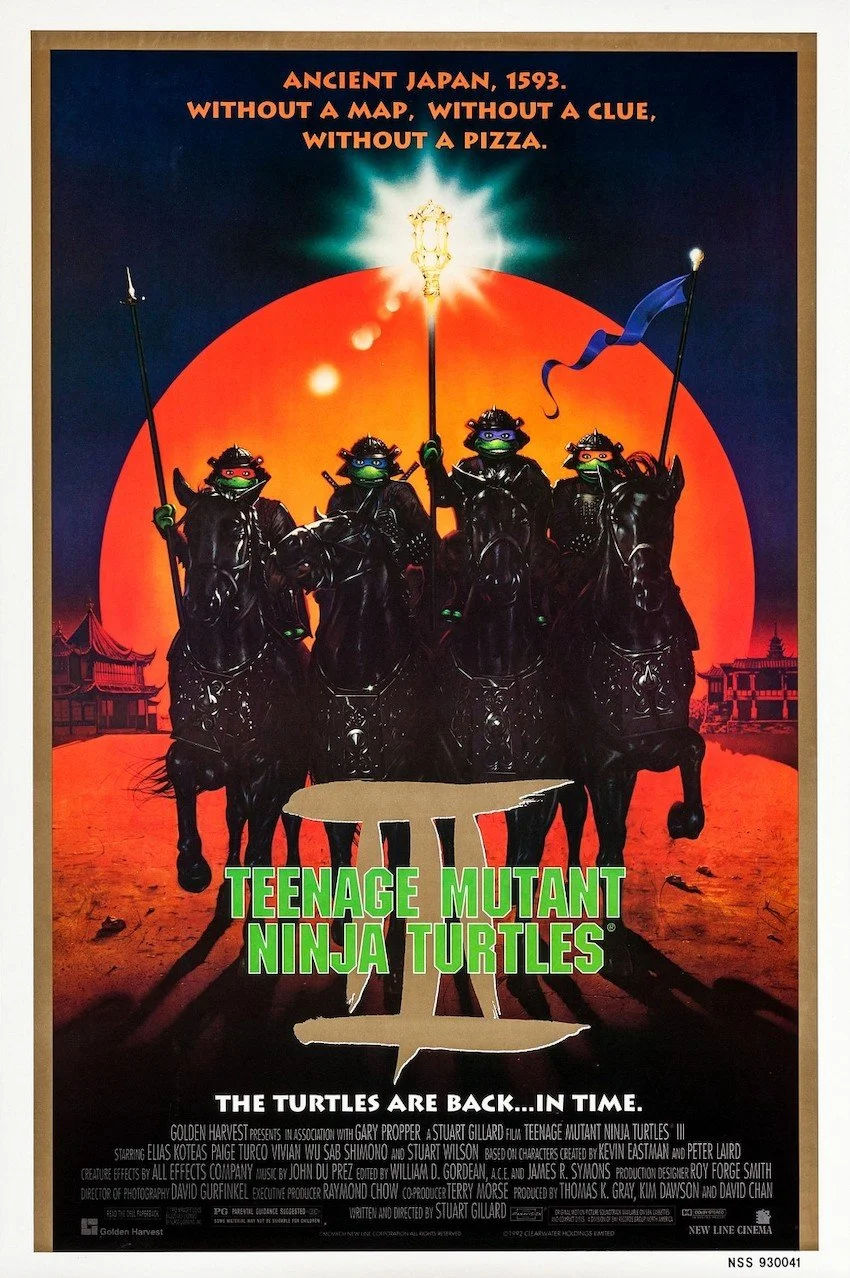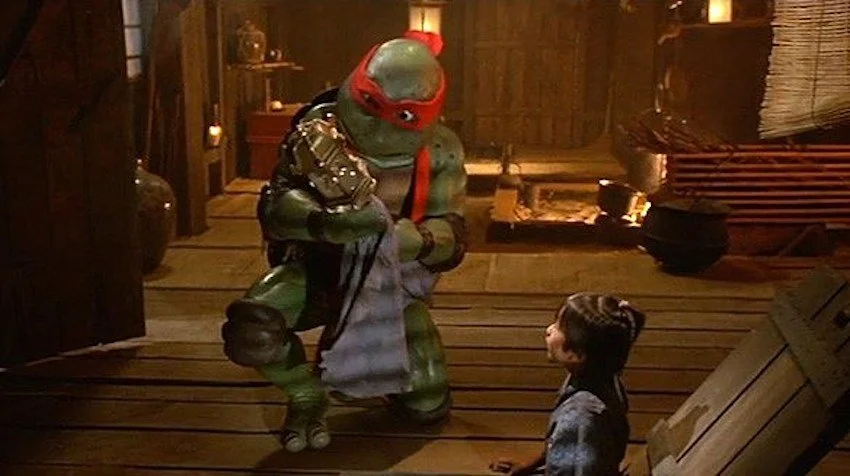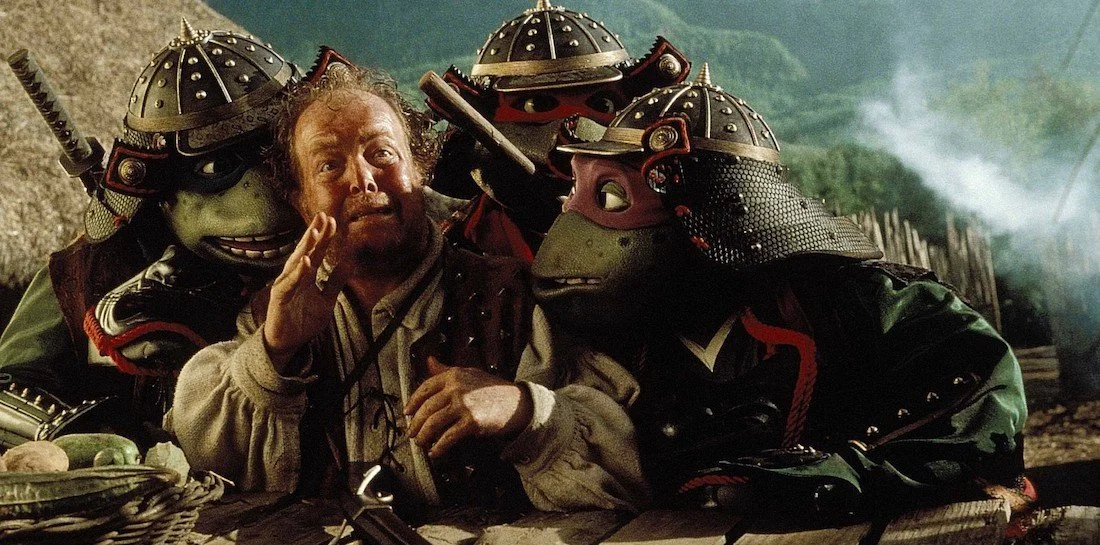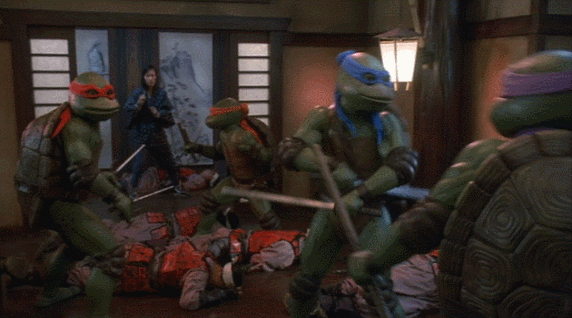TEENAGE MUTANT NINJA TURTLES III And Japan’s Unification
First off, let’s talk about the four spotted turtles in the room and clear the air. The third Teenage Mutant Ninja Turtles movie is not a failure, nor does it deserve the reputation for being a terrible movie.
1993’s TEENAGE MUTANT NINJA TURTLES III, written and directed by Stuart Gillard, had a budget of $21 million and it made over $54 million.
Money may not be everything, but in Hollywood, it’s definitely something to consider. While it has the weakest box office numbers of the first three films, it was not a bomb. When I hear something is a bomb, I assume that the film did not make its money back. The third Turtles movie did so twice over. If you want a better example of a samurai movie that bombed financially, may I introduce you to 47 RONIN (2013) directed by Carl Rinsch and starring the top tier cast of Keanu Reeves, Hiroyuki Sanada, and Tadanobu Asano. With a huge budget of up to $225 million, and the promise of gorgeous special effects, 47 RONIN was set up to be a blockbuster hit.
It only made 67% of its budget back. So, when it comes to money, I suggest betting on green and teen.
I will also forgive TEENAGE MUTANT NINJA TURTLES III for its odd choice as a time travel movie, because it was the popular trend of the time. It was following the steps of other successful sequels like TERMINATOR 2: JUDGMENT DAY (1991), ARMY OF DARKNESS (1992), and BACK TO THE FUTURE PART III (1990).
There are many other things that TEENAGE MUTANT NINJA TURTLES III does right. It’s kid friendly without being too boring for adults. It goes all in on zany cartoonish comedy and pop culture references while still maintaining its wholesome sweetness. Sure, the new costuming is a bit jarring. The spots on the Turtles’ skin can be a bit distracting at times, and the beaks are almost bird like. It is unfortunate that the Jim Henson Company did not continue working with this franchise into the third film, but that hardly makes it unwatchable. In fact, I enjoy and appreciate this third movie even more as an adult, now that I’ve stopped pitting it against the first two installments.
Giving titles from your childhood a second chance later in life is a worthwhile experience. TEENAGE MUTANT NINJA TURTLES III earned my respect in new ways. I was so pleased with the subtle attention to detail when it came to the history of feudal Japan and historic set pieces. I found myself thinking about specific choices they made and was later rewarded when I nosedived into research.
The few interior Japanese castle sets looked terrific.
It may sound like a peculiar thing to say, but I marveled at the flooring in the castle rooms. It looked so authentic. There’s something about Japanese flooring that makes it look excessively shiny yet well handcrafted.
Google “Japanese wood flooring” and check out the images to see what I mean. I’ve seen those floors in Japanese castles I’ve toured, as well as the contemporary Japanese homes I’ve been in. When I saw the floors in the castle rooms, I clapped.
The costuming also aligned seamlessly with many Japanese clothing and uniform artifacts I’ve researched from the Edo period. I was particularly delighted at the beauty of the Edo period kites featured in the scene between Raphael and Yoshi. What careful attention to detail! It’s the small things like that which matter most to me, because it makes it clear that someone is listening.
The most surprising and historically conscious detail of all happens for a brief second in the beginning of the movie. It is not by coincidence that the year 1603 was chosen for the plot of the local daimyo (a great lord acting on behalf of the shogun) feuding with the villagers.
1603 marks the year that the Edo period began, which is also referred to as the Tokugawa period. Tokugawa Ieyasu is considered the unifier of Japan. By using the power and opportunity he gained under Oda Nobunaga, Tokugawa went on to rule and began almost 300 years of peace, political stability, economic, art, and cultural growth. Another notable characteristic of this period is the political policy of isolationism from foreign communities.
The story revolves around a village in the midst of a revolution and at odds with its daimyo.
Interference from a foreign government further complicates the transition of restoring peace between the daimyo Norinaga and his people. I do not think the choice to name the fictional daimyo Norinaga was a whim.
It sounds awfully close to Nobunaga, the Shogunate (miliary dictatorship of feudal Japan) who would open the gate for Tokugawa to create peace. Ultimately, it is implied that Kenshin and Mitsu will marry and therefore bring unification to their land. Walker is defeated, and the foreigners are driven out. It is the beginning of a new era.
The movie could have taken place at any point in feudal Japan. Yet, by choosing 1603, the filmmakers send a nod to honoring actual Japanese history. It is a tribute to the unification story and period of peace under the Tokugawa Shogunate. This one small detail clues us in to how much effort was put into creating this movie with love, respect, and care. As someone who came into this movie expecting to rip it apart for poor history, I was impressed by how this kids’ film held more regard for historical accuracy than most period blockbusters I’ve seen.
TEENAGE MUTANT NINJA TURTLES III will probably forever remain most fans’ least favored of the three movies, but it is not for lack of trying. It is hampered by a few clumsy choices, the time travel trend of its day, but mostly just being third in a series of super beloved movies. There is so much love in TEENAGE MUTANT NINJA TURTLES III to be had for anyone willing to give it a second chance and see it through new eyes.


